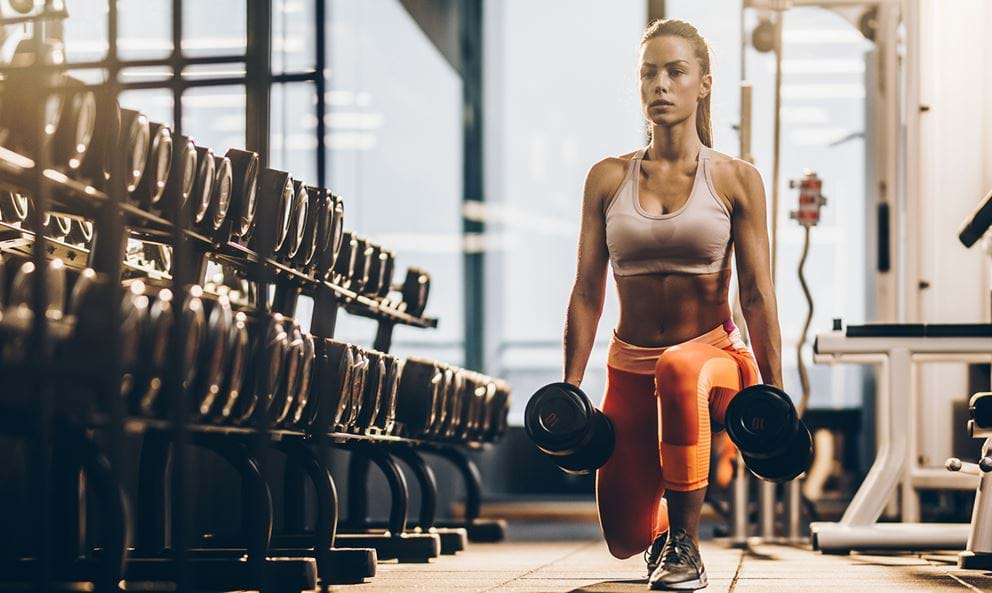Training for Kilimanjaro in the Gym

Mount Kilimanjaro in Tanzania is the tallest mountain on the continent of Africa, with an elevation of 5,895 metres or 19,341 feet. The climb is notoriously dangerous, with steep inclines, fluctuating weather conditions and extreme heights causing risks of altitude sickness.
While the climb to its peak isn’t for the faint hearted, if you’re planning to journey to its summit, it’s important to spend a minimum of 3 months preparing your body for the trip. While you don’t need to be in marathon shape, your muscles, limbs and lungs will be under some serious strain, so being in good shape will definitely help make the experience more enjoyable.
If you’re not sure where to start, this guide will give you tips and advice to start getting yourself physically and mentally ready for the climb of a lifetime.
1. Focus on strength and endurance
Most routes to the summit of Kilimanjaro take a minimum of 4-5 days, potentially many more. So, your body will be under the strain of hiking and climbing up steep slopes in an extreme environment, and don’t forget you’ll have all your kit on your back too. Building strength will help with your endurance and mean you’re less likely to face injury on your climb.

Strong Legs:
Having a solid foundation of strength and endurance is, in many ways, more important than cardio fitness when it comes to a big hike like Kilimanjaro.
The key is to keep your legs strong so the slopes, inclines and continuous climbing don’t wear you out before you reach the peak. We recommend including the following in your training plan:
- Compound Exercises: these are movements that work out several muscle groups at the same time, plus you can create workout routines that string a variety of these together for maximum impact and coverage. Examples of leg-focused compound exercises that would be particularly beneficial for your training include squats, deadlifts and lunges.
- Stairmaster: this piece of equipment will simulate some of the tougher climbs you’ll face near the summit, so is perfect for training. It is said that if you can walk on a Stairmaster for up to two hours at around 30 steps per minute while carrying a 9kg backpack (more on carrying weights later) then you’re well prepared for climbing Kilimanjaro. Take your time building up to that level so you don’t injure or strain yourself. Create a training plan over several months (depending on your starting fitness levels) with that as your goal.
- Focus on your glutes: your glutes help you to power you forward – you’ll need them to keep your legs strong and sturdy throughout your climb. There are plenty of different exercises you can do to focus on your glutes, including glute bridges, single leg glute bridges and Romanian deadlifts. We have an entire Leg & Glutes hub that gives more details about these, and other great workouts. For an even deeper glute workout, include resistance bands and complete several reps of lateral band walks or banded squats – you’ll see an improvement in no time.
Strong Upper Body:

Building upper body and core strength is also incredibly important. Strong shoulders will mean you can focus on the hike, not your pack, and a sturdy core will help with your balance and stability. We recommend your workout plans include:
- Functional training: this workout style integrates weight (either hand weights, bars or body weight) with movements, so you can work on both your strength and your fitness at the same time. To target your upper body, we recommend trying kettlebell pushes, ball slams and negative push ups, all of which are explained in more detail in our Functional Upper Body Workout Guide. For your core, make sure to include exercises like mountain climbers and Russian twists, which are featured in our Functional Ab Workout Guide.
- Shoulder exercises: your shoulders will literally be doing the heavy lifting on your climb, so include workouts that target this area specifically. Including barbells, plates and dumbbells means you can build up your strength by increasing the weight over time. Check out our Shoulder Exercises Guide for more tips and information.
2. Work On Your Aerobic Fitness

While strength and endurance training should make up a major part of your Kilimanjaro preparation, it's important to include aerobic exercises to improve how you process oxygen. This can help prepare you not only for the climb, but also the limited oxygen as a result of the altitude.
There’s a huge range of aerobic exercises you can include in your training plan and many of these can be done either in or out of the gym. Types of exercises we’d particularly recommend include:
- Step aerobics: we run a range of step classes, so you can train for your climb in a fun social environment
- Long distance jogging: hit the treadmill and practise long steady running to improve your endurance and breathing
- Walking: play with the incline on the treadmill and steadily increase the gradient. This will ensure your legs are feeling the workout as well as your lungs
- Cycling: head over to the stationery bikes or join one of our cycle classes for a workout that provides both aerobic and cardio fitness
3. Try weighted walking
When climbing Kili, it’s likely you’ll be carrying a backpack weighing around 5kg – 7kg every time you’re walking. Add to this the exhaustion and effects of altitude and you’ll soon realise the importance of preparing your body for this additional weight and pressure.
As you build up your fitness, start incorporating a weighted backpack, particularly on your walks and hikes. Build your way up to twice the weight you expect to carry, to account for the conditions you’ll be facing on the mountain. The treadmill is great for this, but we also recommend taking your weighted backpack on uphill walks outside as well – not only will it give you a good chance to test your equipment and the way it sits on your body, but you’ll be even better prepared for the similar weight and pressure you’ll be facing at altitude.
4. Give yourself enough time to rest and recover

Fitness and wellbeing is a focus on lifestyle, not just your gym workouts, and this is especially true when you’re preparing for a big event like climbing Kilimanjaro. As your training increases, you’ll be putting more strain on your body, meaning you’ll need to keep it fuelled with the nutrition it requires and getting plenty of rest to allow yourself to recover. Eight hours sleep a night, plus recovery days integrated into your training plan will help stop you overdoing it and keep you on the right track both mentally and physically.
5. MAKE SURE TO FUEL YOUR BODY
Likewise, as your climb gets closer, it’s important to make sure your body has time to absorb and prepare for the endurance, so starting on the right nutritional path far in advance of your hike is important. We recommend including:
- Plenty of wholegrain carbohydrates to give the body the energy needed to climb, as well as fibre, minerals and vitamins
- Protein from lean meat, fish, lentils, seeds and so on, to help repair muscle tissues as you build strength
- Brightly coloured fruit and veg such as peppers and oranges, as these are packed with Vitamin A and C to boost collagen and protect your immune system


